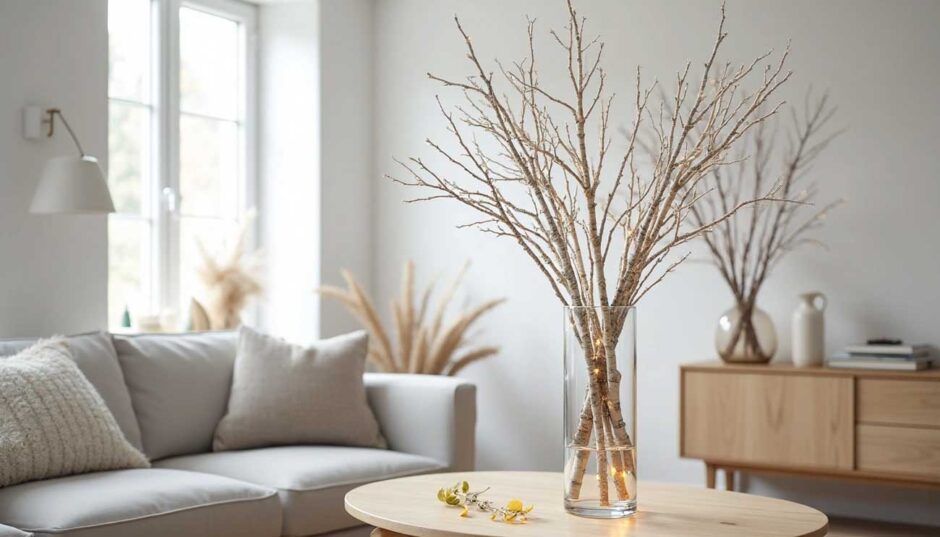Pyntekvister, a Scandinavian term meaning decorative twigs or ornamental branches, have become a timeless trend in interior design and home styling. Whether used in minimalist homes, rustic settings, or modern spaces, pyntekvister add a touch of nature’s serenity and elegance. They are simple, versatile, and sustainable — embodying the Nordic philosophy of blending natural elements into everyday living.
From festive decorations to year-round home adornments, pyntekvister can transform any room into a cozy, inviting environment. In this article, we will explore what pyntekvister are, how to use them creatively, and why they have become a favorite choice for designers and homemakers alike.
The Origin and Meaning of Pyntekvister
The word pyntekvister comes from the combination of pynte (to decorate) and kvister (branches or twigs). Traditionally, Norwegians and Danes used natural twigs collected from forests to decorate their homes during holidays. Over time, this evolved into an art form — transforming simple branches into beautiful interior pieces adorned with ribbons, ornaments, or flowers.
Today, pyntekvister symbolize simplicity, sustainability, and the appreciation of nature’s textures. They reflect the Scandinavian design philosophy that beauty lies in minimalism and natural forms.
How Pyntekvister Enhance Home Décor
Pyntekvister offer a perfect blend of rustic charm and modern design. They can be used in various ways to enhance both the aesthetic and emotional appeal of a living space.
Here’s a quick look at how pyntekvister can elevate your home décor:
| Decorative Use | Description | Ideal Setting |
|---|---|---|
| Wall Arrangement | Artistic twigs displayed on walls or frames | Living rooms, hallways |
| Table Centerpiece | Bundles of twigs arranged in vases or jars | Dining tables, coffee tables |
| Seasonal Decor | Decorated twigs for Christmas or Easter | Entryways, window sills |
| Minimalist Accent | Bare twigs for a clean, organic look | Modern or Scandinavian interiors |
Creative Ways to Use Pyntekvister
Pyntekvister as Table Centerpieces
A vase filled with pyntekvister can make a striking centerpiece for any table. You can enhance the look by intertwining fairy lights, small ornaments, or dried flowers. This simple decoration exudes elegance and creates a calming atmosphere.
Pyntekvister for Wall Art
Mounting pyntekvister on walls can turn plain spaces into artful displays. Arrange the twigs in geometric patterns or abstract shapes for a contemporary look. For a softer touch, hang photographs, feathers, or paper flowers from them.
Pyntekvister in Seasonal Decorations
During festive seasons, pyntekvister are especially popular. For Christmas, they can be painted white or gold and adorned with ornaments and ribbons. For Easter, attach colorful eggs or spring flowers. Their versatility allows them to fit every occasion naturally.
Pyntekvister in Minimalist Homes
For lovers of minimalism, bare pyntekvister can be displayed in neutral-colored vases or containers. Their natural texture adds warmth without overwhelming the space. This approach aligns perfectly with the Scandinavian concept of hygge — creating comfort and contentment through simplicity.
Choosing the Right Pyntekvister for Your Style
The charm of pyntekvistr lies in their adaptability. You can choose from various types depending on your décor theme:
| Type of Pyntekvister | Material/Look | Best For |
|---|---|---|
| Natural Wood Twigs | Rustic and organic | Country or vintage interiors |
| Painted Pyntekvister | White, gold, or metallic finishes | Modern and festive décor |
| Artificial Pyntekvister | Made from plastic or resin | Long-lasting and low maintenance |
| Floral Pyntekvister | Combined with artificial flowers | Romantic or bohemian settings |
Sustainability and Eco-Friendly Appeal
In a world increasingly concerned with sustainability, pyntkvister represent an eco-conscious choice. Most are made from recycled wood or naturally fallen branches, reducing waste and encouraging sustainable living.
By using natural materials instead of synthetic decorations, homeowners can minimize their carbon footprint while bringing nature indoors. This practice not only benefits the environment but also promotes mental well-being, as studies have shown that natural elements can reduce stress and improve mood.
DIY Pyntekvister: Crafting Your Own Natural Décor
Creating your own is a rewarding and creative experience. Here’s a simple step-by-step guide to make your own set of decorative twigs:
| Step | Action | Details |
|---|---|---|
| 1 | Collect Twigs | Gather small, dry branches from your garden or local park. |
| 2 | Clean and Dry | Remove bark and let them dry completely. |
| 3 | Paint or Decorate | Use paint, glitter, or ribbons to match your interior style. |
| 4 | Arrange | Place them in a vase or tie them together as wall décor. |
| 5 | Accessorize | Add lights, flowers, or seasonal ornaments for extra charm. |
By customizing colors and decorations, you can tailor to suit different moods or occasions — from elegant dinner parties to cozy winter evenings.
Pyntekvister in Commercial Spaces
Beyond homes, pyntekvistr have found their way into commercial interiors. Restaurants, spas, and boutiques use them to create natural ambiance and a welcoming atmosphere. They can be paired with soft lighting, candles, or neutral tones to evoke calmness and sophistication.
Hotels often use large arrangements in lobbies and lounges, highlighting their aesthetic versatility and eco-friendly appeal.
Maintenance and Care Tips
Although pyntekvister are generally low maintenance, a few simple steps can keep them looking beautiful:
-
Dust regularly: Use a soft brush or cloth to keep twigs clean.
-
Avoid moisture: Keep them away from damp areas to prevent decay.
-
Repaint or refresh: For painted, reapply paint when it fades.
-
Store properly: When not in use, wrap and store them in a dry area.
With proper care, your can last for years, providing enduring beauty and warmth to your surroundings.
Why Pyntekvister Remain a Timeless Trend
Pyntekvster capture the essence of Scandinavian design — simplicity, sustainability, and connection to nature. They bridge the gap between traditional craft and modern aesthetics, offering endless possibilities for decoration.
Whether you prefer rustic charm or minimalist elegance, adapt seamlessly to any style. Their natural beauty and symbolic meaning of renewal make them a staple in both seasonal and everyday décor.
Conclusion
In the modern world of home styling, pyntekvister stand as a symbol of harmony between nature and design. They are more than just decorative branches — they represent creativity, sustainability, and timeless elegance. From festive arrangements to simple centerpieces, invite nature’s calm into our living spaces, reminding us that beauty often lies in simplicity.
If you are looking to refresh your home with organic warmth and artistic flair, are the perfect choice. Their versatility, eco-friendliness, and minimal maintenance make them a must-have for any décor enthusiast.






